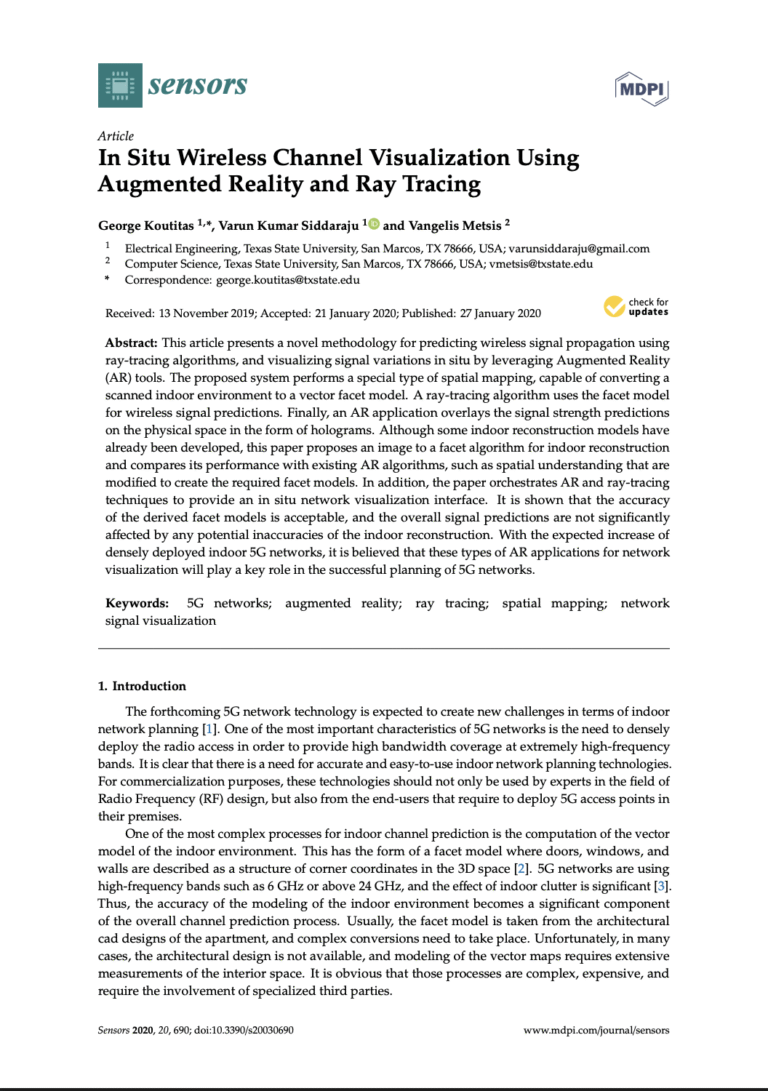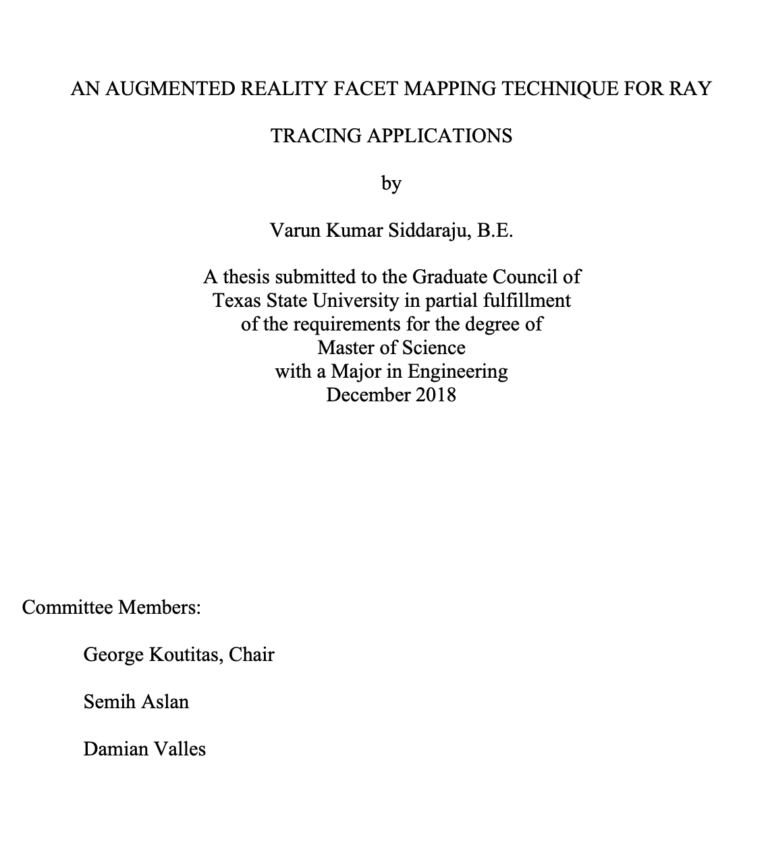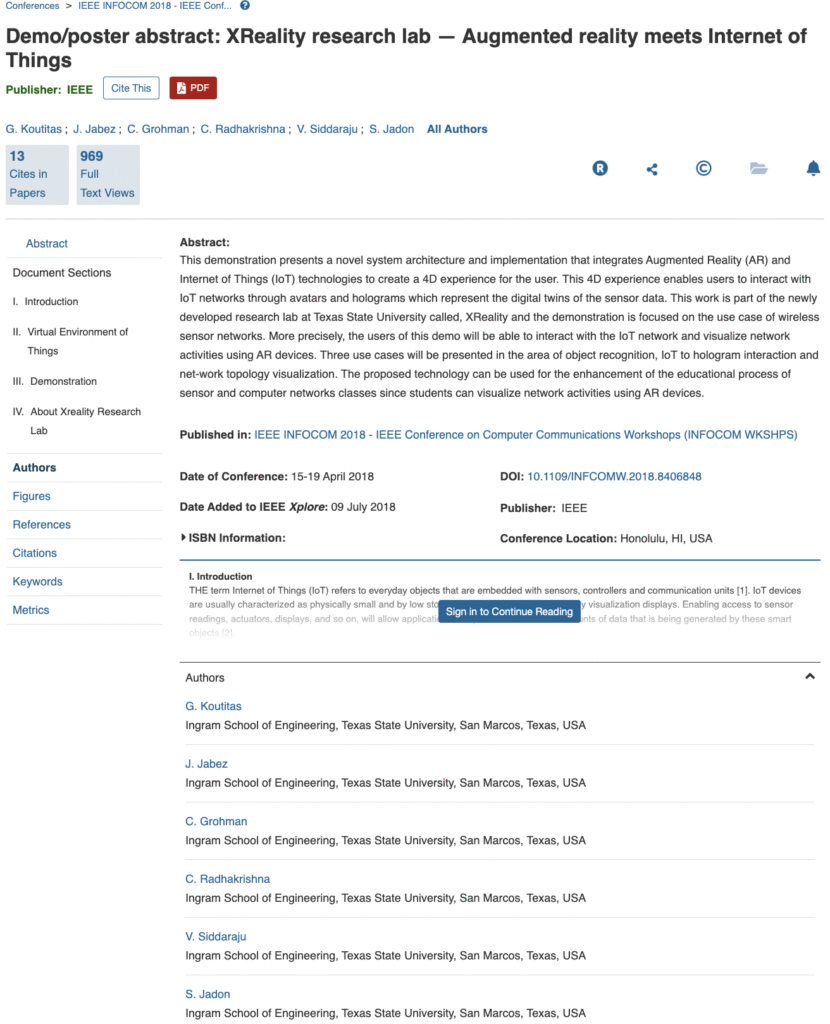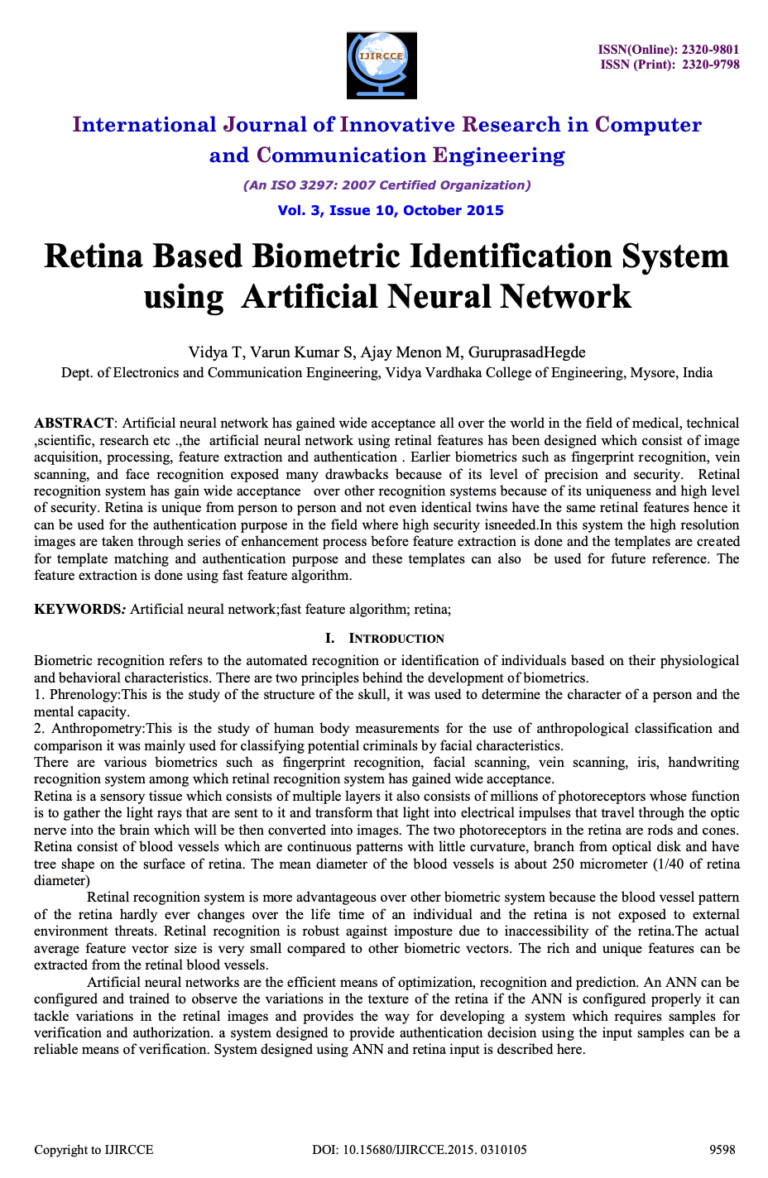Publications
Documenting My Journey Through XR, AI, and Human-Centered Innovation
In Situ Wireless Channel Visualization Using Augmented Reality and Ray Tracing
Authors: George Koutitas, Varun Kumar Siddaraju, Vangelis Metsis
Journal: Sensors (2020, Vol. 20, Issue 3, Article 690)
Year: 2020
Citations: 12+
Lead author of “In Situ Wireless Channel Visualization Using Augmented Reality and Ray Tracing” (Sensors 2020) — pioneering the fusion of AR and wireless-ray-tracing for indoor network planning.
Developed a low-cost “image-to-facet” model that transforms smartphone-captured indoor images into vector maps for ray-tracing signal-propagation predictions.
Validated the method in a real apartment, achieving high accuracy, and enabling users to visualize predicted wireless-signal strength in real space via holograms.


Beginning Windows Mixed Reality Programming: For HoloLens and Mixed Reality Headsets (2nd Edition)
Authors: Sean Ong & Varun Kumar Siddaraju.
Publisher: Apress
Year: 2022
Citations: 26+
Build XR apps with Unity & MRTK, covering HoloLens 2 and spatial tracking.
Focus on spatial computing, monetization, and publishing.
26 citations (2nd Ed.) and 10K+ accesses on SpringerLink.
Trusted by educators, developers, and XR innovators worldwide.
An Augmented Reality Facet Mapping Technique for Ray Tracing Applications
Authors: Varun Kumar Siddaraju
Thesis, Texas State University
Year: 2018
Advisor: Dr. George Koutitas
Pioneered a fusion of AR and wireless ray tracing for indoor signal visualization—enabling real-time holographic representation of wireless channels.
Introduced a facet-mapping technique that converts smartphone-captured indoor images into 3D spatial models for accurate signal-propagation prediction.
Validated the framework in real environments, achieving high accuracy in predicting wireless strength and offering a new paradigm for smart-building network planning.


X-Reality Research Lab: Augmented Reality Meets Internet of Things
Authors: Varun Kumar Siddaraju, George Koutitas, Vangelis Metsis
Conference: IEEE INFOCOM — International Conference on Computer Communications, 2018
Date: April 3, 2018
Citations: 25+
Presented a 4D interactive system integrating Augmented Reality (AR) and Internet of Things (IoT) for immersive network visualization.
Enabled users to interact with IoT sensor data through avatars and holograms—creating digital twins of real-world environments.
Demonstrated object recognition, hologram interaction, and network topology visualization for smart sensor network education and research.
An Augmented Reality Facet Mapping Technique for Ray Tracing Applications
Authors: Varun Kumar Siddaraju, Dr. George Koutitas
Conference: International Conference on Digital Telecommunications (ICDT 2018)
Date: March 12, 2018
Developed a low-cost AR-based spatial mapping algorithm that transforms smartphone-captured indoor images into accurate 3D facet models—eliminating the need for expensive RGB-D or SLAM cameras.
Integrated AR visualization with ray-tracing simulations to predict and visualize indoor 5G wireless channel behavior in real-time, improving human-to-network interaction.
Enabled rapid indoor network planning through an intuitive GUI that constructs a 3D indoor model in minutes, allowing non-experts to analyze and optimize signal coverage.


Retina-Based Biometric Identification System Using Artificial Neural Network
Authors: Vidya T, Varun Kumar S, Ajay Menon M, Guruprasad Hegde
Journal: International Journal of Innovative Research in Computer and Communication Engineering (IJIRCCE)
Volume: 3, Issue 10
Date: October 2015
Introduced an ANN-powered retinal recognition system capable of extracting distinct vascular patterns using fundus images and adaptive image enhancement techniques.
Implemented FAST feature detection algorithm, achieving higher speed and accuracy compared to SIFT and MSER methods.
Demonstrated high authentication accuracy through confusion matrix analysis and validation performance graphs, showing minimal error rates in retinal feature matching.
